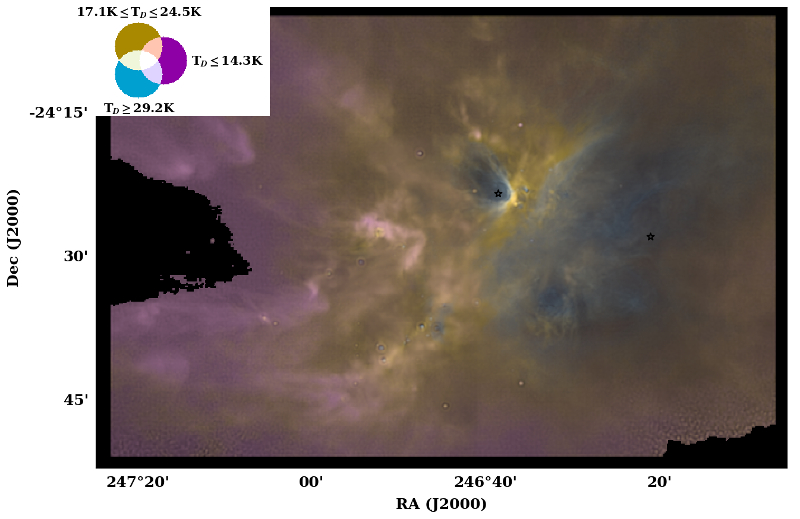| EPoS Contribution |
|
Cutting Down Gould Belt Filaments
Alexander Howard U Cardiff, Cardiff, UK | |
| The conventional view of dusty, star-forming filaments is one whose resolution is commonly defined by the coarsest observation in any given set, and which relies on the assumptions that temperature does not vary along the line of sight, and that the dust opacity follows a simple power law with a fixed index, β, across the entire cloud. This clearly presents a limited view of these regions. I present results from the Bayesian PPMAP algorithm of the Taurus B213/L1495 complex, and of the rho Oph L1688 and L1689 clouds, observed with five Herschel bands and the SCUBA-2 850μm band. In Taurus, I show the main filament to be approximately half the width reported in two earlier papers despite employing the same typical 18" resolution. The main filament appears to be largely trans-critical, with cores fragmenting only in small, localised regions of super-criticality. I also reveal a picture of a more nested astrophysical structure, with a cold, narrow core surrounded by a warm outer sheath. Furthermore, I observe both line of sight and global variations in the dust opacity. The parental cloud shows a higher value of β ≥ 1.6, the filament harbours dust with a β ≤ 1.4 value, and the dense clumps contain dust with a β = 1. In rho Oph, I fully utilise the information provided by the Herschel 70μm band, and the SCUBA-2 850μm band to produce a dust model at 14" resolution. I use this to compare the large scale properties of the L1688 and L1689 regions, and to trace a network of filamentary structures in both regions. I find that clumps previously thought to be isolated are interconnected by filaments and are part of the large scale structure of the cloud. I obtain similar filament widths to those found in Taurus, and utilise the dust temperature and β variations produced by PPMAP to study the impact of feedback from both the local S1 and HD147889 stars, and from the more distant Upper Scorpius OB association. | |
 | |
| Caption: 3 colour image of dust occupying different line of sight temperature bands in the Ophiuchus L1688 cloud. The impact of HD147889 and S1 (black stars) can be clearly seen in the regions which contain dust with temperatures greater than 29.2K. | |
| Collaborators: A. P. Whitworth, U Cardiff, UK M. J. Griffin, U Cardiff, UK M. L. W. Smith, U Cardiff, UK K. A. Marsh, IPAC, US S. D. Clarke, U Koeln, DE |
Key publication
Suggested Session: Molecular Clouds |

